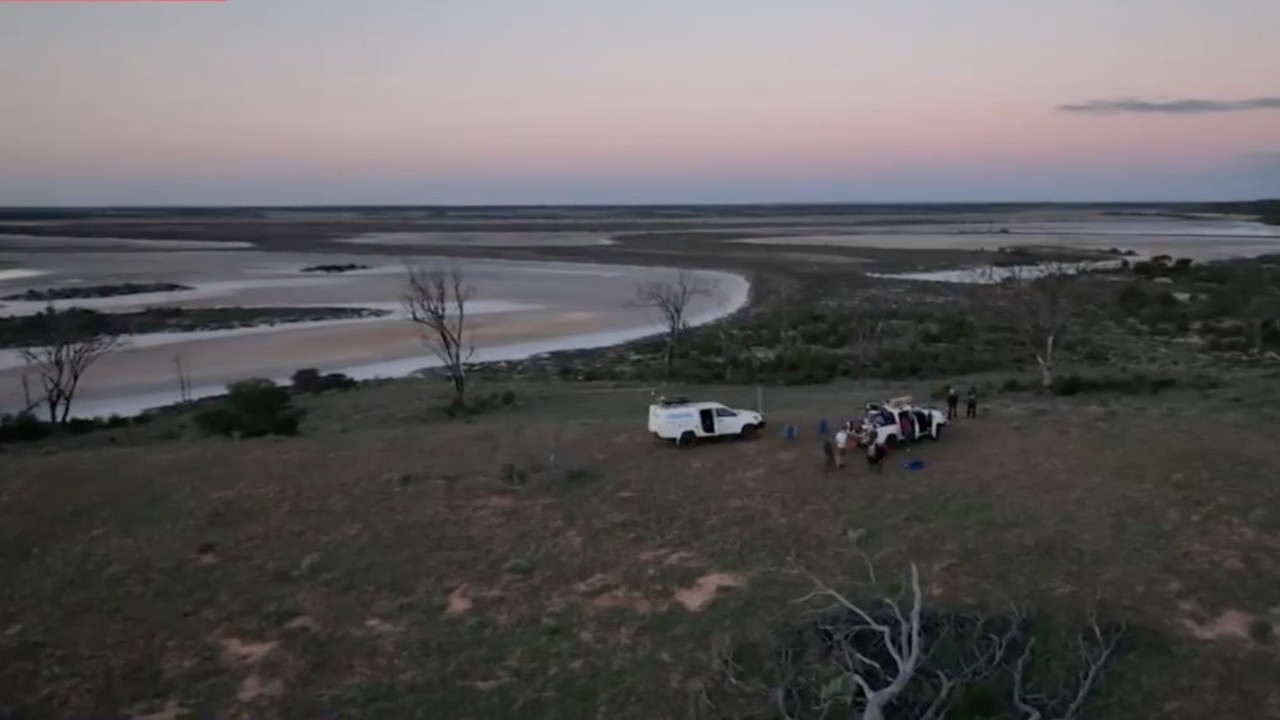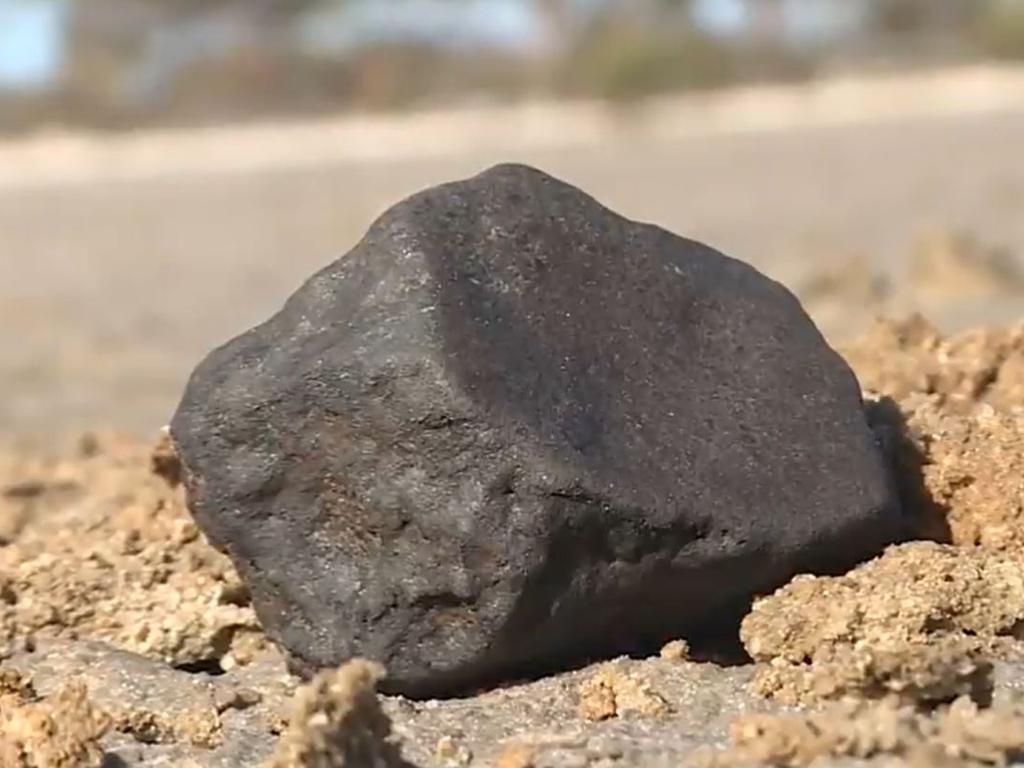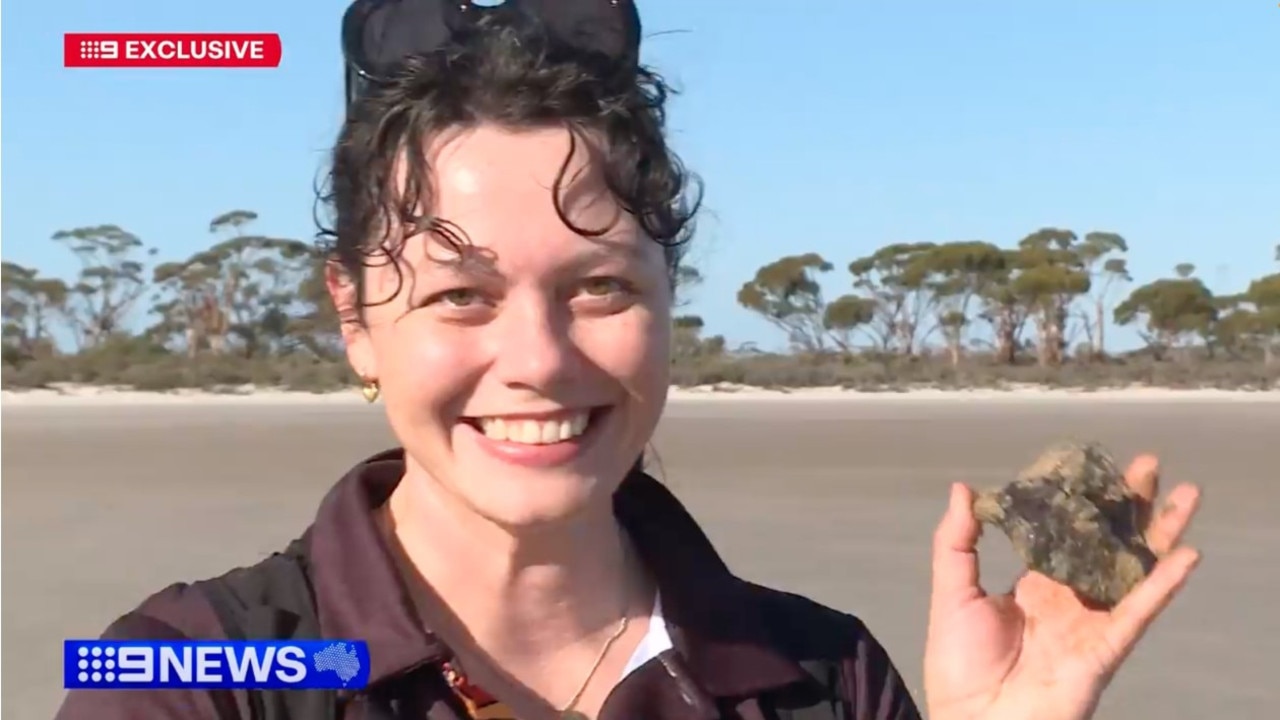‘We found a meteorite!’: Joy as rare space rocks discovered in WA outback
Two fragments of a four-billion-year-old meteorite have been recovered from a remote salt lake, just days after a fireball blazed across the night sky.
A team of scientists has uncovered two rare meteorite fragments on remote salt flats in outback Western Australia, days after a fireball lit up the skies above Perth and surrounding regions on Mother’s Day.
Researchers from Curtin University, part of the Desert Fireball Network, traced the meteorite’s dramatic descent to Lake Hope, a barren expanse roughly seven hours east of Perth, using hi-tech weather modelling and an extensive network of sky-monitoring cameras.
Planetary scientist Hadrien Devillepoix told 9News the team used the advanced weather modelling to predict how the meteorite would drift in the wind once it had slowed down enough.


They then drove for hours through rugged terrain and dense bush before trekking on foot more than seven kilometres across the lake’s salt flats.
As the team trekked across the salt flats, 9News footage captured the moment team member Mia Walker raised her arms in triumph and shouted, “We found a meteorite!”
“I started running and it was so special, I saw this hole in the lake and it only took, you know, just a little tug to pull it out,” Ms Walker said.
“It’s very special, it’s very exciting to get to find one of these.”

Shortly after their initial discovery, the team struck gold again, uncovering a second fragment not far from the first.
Among the finds was a significant chunk of space rock, one of the largest the team has recovered to date.
“Here’s a piece of space rock that’s been travelling the solar system for four and a half billion years,” Dr Devillepoix said.
“And now it’s in our hands and we can use it for science, that’s so exciting.”

He said rain was forecast and the salt flats could be submerged “in a matter of days.”
“That could have been lost forever,” he said.
The meteorite fragments will now undergo detailed analysis in a laboratory to determine their composition and pinpoint their origin in the solar system.



